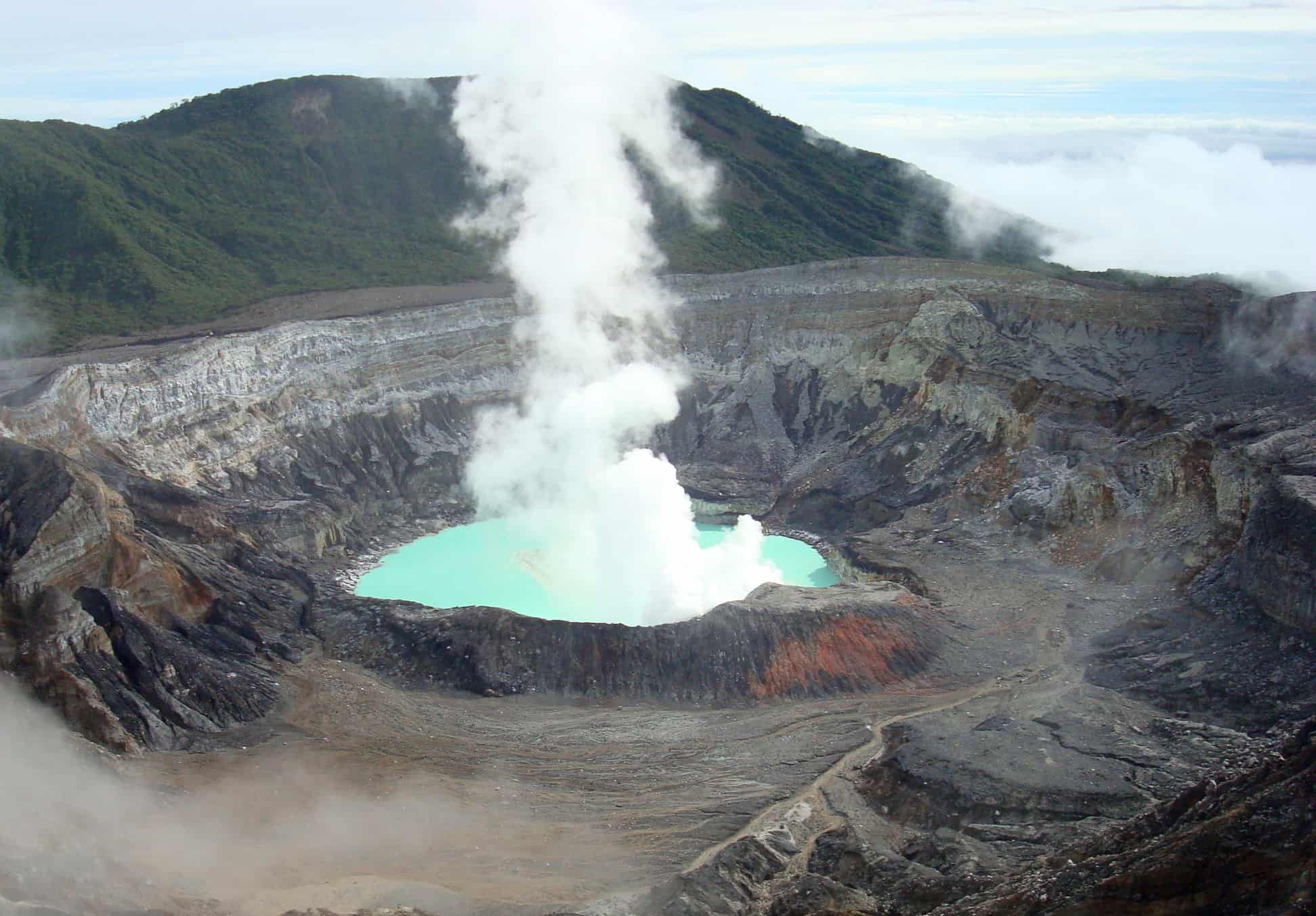Volcanologists from the University of Costa Rica’s National Seismological Network (RSN) are installing two video cameras and two thermal cameras at Poás Volcano, one of the most active volcanoes in the country.
Last week RSN experts began transporting materials to the Poás Volcano National Park in the province of Alajuela and building the foundations for the cameras, which will broadcast real-time video and thermal video feeds to monitor frequent emissions of steam and other materials. Scientists also will be able to track of temperature changes inside the crater.
Video feeds broadcast by the four cameras will be available to the public at the RSN website. Currently the Volcanological and Seismological Observatory of Costa Rica (OVSICORI) has cameras at Poás, but they only take and broadcast snapshots in intervals.
RSN crews last Thursday were able to observe activity in the crater’s lagoon. Volcanologist Raúl Mora said they witnessed five phreatic eruptions – which are composed of water, gas and mud – in a span of some five hours.
“The highest reached some 60 meters, and falling material into the lagoon generated a series of waves, known as seiches, of up to 2 feet,” he said.
Mora and RSN volcanologist Gino González also discovered several small white stones, which means “the lagoon’s acidic conditions harm the rock’s original composition until they become white and very fragile,” González said.
After each eruption scientists also were able to observe sulphur deposits on the lagoon’s surface. This phenomenon has been occuring more frequently in recent months due to the lagoon’s low water levels.
“Considering the region has seen several showers this month, characteristic of the rainy season, the lagoon is still very low. The water level rose only two inches compared to last month. That is an insignificant amount and leads us to believe the level is decreasing due to intense heat from the crater,” Mora said.
Last February, Poás registered an explosion that expelled material 300 meters into the air, although María Martínez Cruz, a volcanology and geochemistry expert with OVSICORI, said the event is considered “normal for the volcano’s activity.”
Despite the volcano’s intense activity tourist visits have not been affected. Access to the crater at Poás Volcano National Park is open Tuesday-Sunday from 8 a.m.-4 p.m.
RSN experts also said that once they finish installing cameras at Poás, they will place four more at the Turrialba Volcano, another active volcano located east of the province of Cartago.





